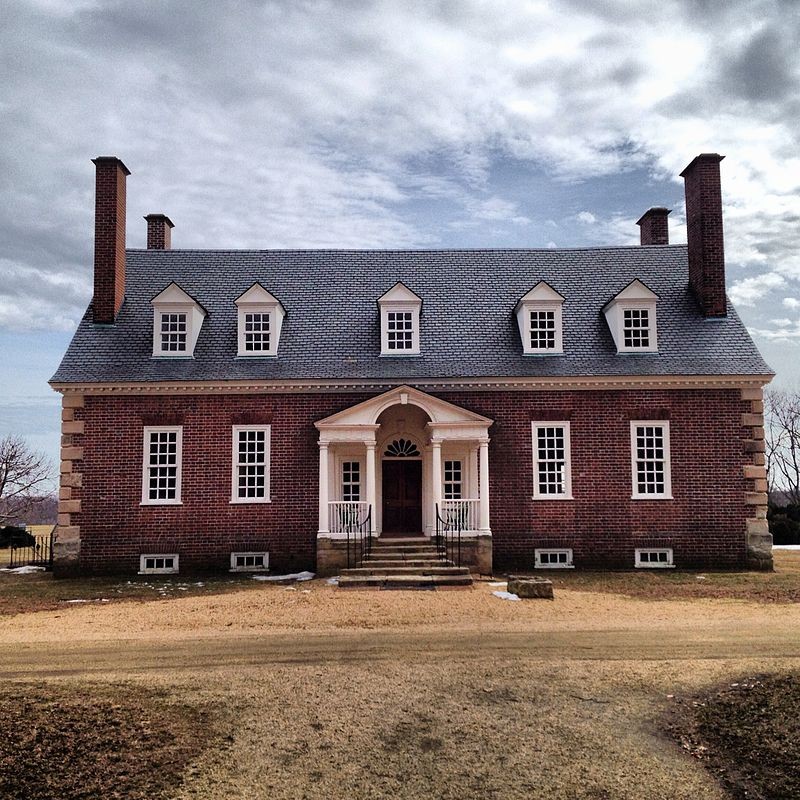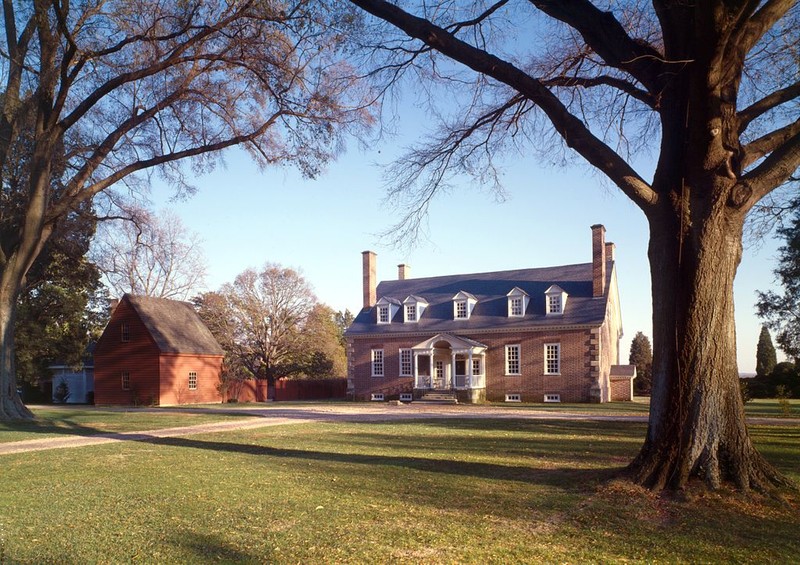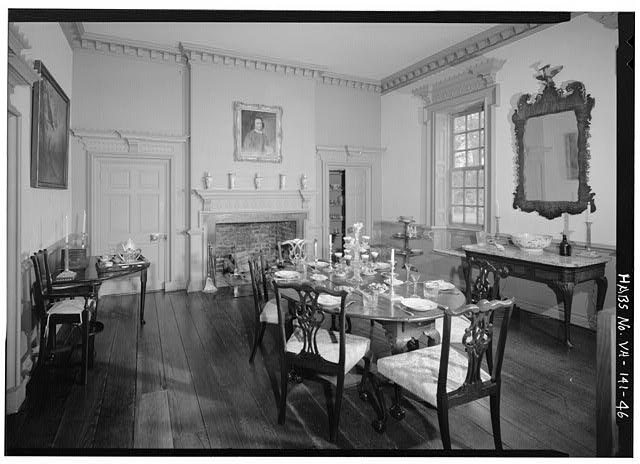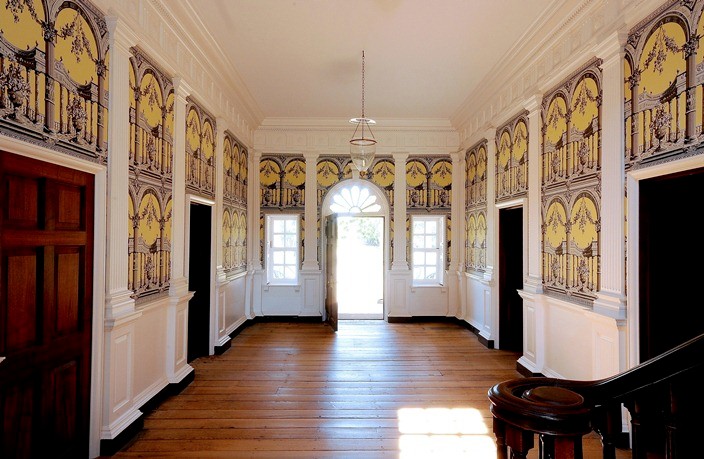Gunston Hall
Introduction
Text-to-speech Audio
Images
Gunston Hall, Founding Father George Mason's home in Fairfax County by Justin A. Wilcox on Wikimedia Commona (CC BY-SA 3.0)

View of Gunston Hall from the northwest, Historic American Buildings Survey (no known restrictions)

Dining room inside the home, Historic American Buildings Survey (no known restrictions)

Ornamental interior of Gunston Hall's central hallway, Louise Kraft on GunstonHall.org/Encyclopedia Virginiana (reproduced under Fair Use)

Backstory and Context
Text-to-speech Audio
History of Gunston Hall
In the mid-17th century, George Mason’s great-grandfather immigrated from England to present-day Stafford, Virginia, and from their arrival to Virginia, the Mason family held essential political and economic roles. By the time George Mason was born in 1725, the family was one of the largest local landowners in Fairfax County. As such, certain public obligations fell upon George and, between 1747-1748, he was named to the Fairfax County Court, took a position among the county militia, served as vestryman in the Truro Parish, and he sought a seat in the House of Burgesses (a seat he later won in 1758).
Following the marriage to his wife, Ann, in 1750, George’s prominence and wealth only grew, and probably around 1755, George Mason began building Gunston Hall. Together, George and Ann planned the home and garden along the Potomac, near George Washington’s own plantation. A carpenter and indentured servant from England, William Buckland, designed and built the mansion as well as its world-renowned interior. In addition to the mansion and its gardens, Gunston Hall also featured outbuildings, slave quarters, a schoolhouse, kitchens, and four large plantations.
After Mason’s death (1792) and the selling of the home in 1830, Gunston Hall fell into disarray, marked by neglect and modest restoration. It wasn’t until 1912 that Louis Hertle bought the property and, with his wife, undertook extensive restoration. In 1949, Hertle willed the property to the Commonwealth of Virginia as a museum that the National Society of Colonial Dames would run.
Sources
Board of Regents of Gunston Hall. George Mason's Gunston Hall. Accessed January 29th 2020. https://gunstonhall.org/.
https://en.wikipedia.org/wiki/Gunston_Hall#/media/File:Gunston_Hall_VA_2014_02_02_22.jpg
https://www.loc.gov/pictures/collection/hh/item/va0433.color.570538c/
https://www.loc.gov/pictures/item/va0433.photos.161599p/
https://www.encyclopediavirginia.org/slide_player?mets_filename=sld878mets.xml
